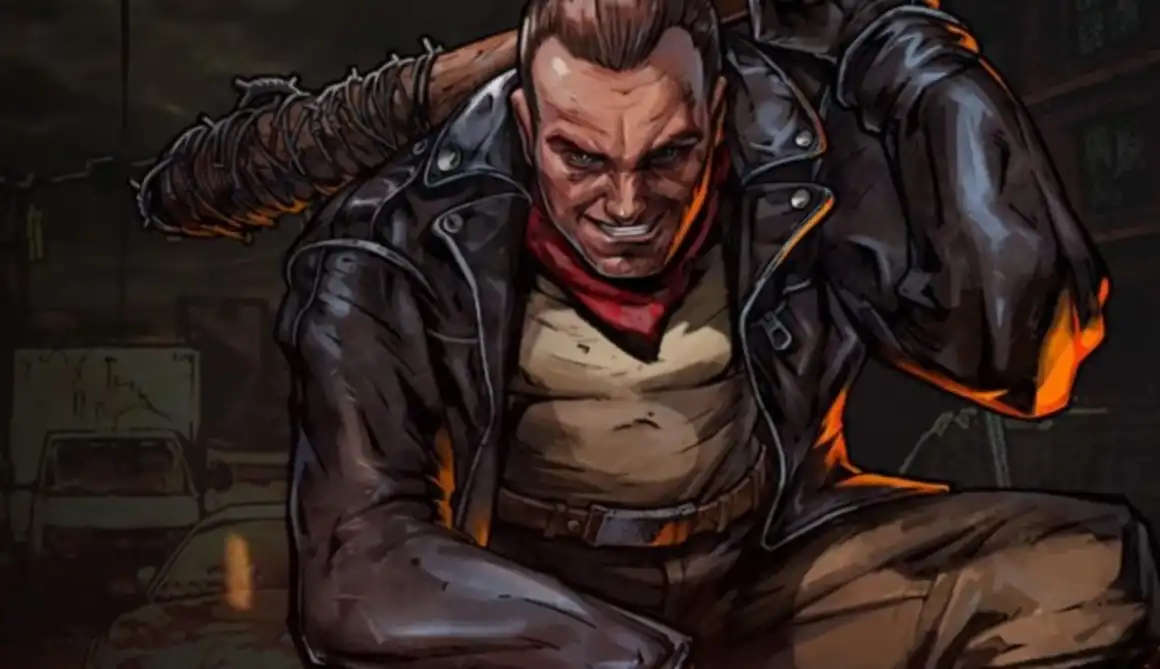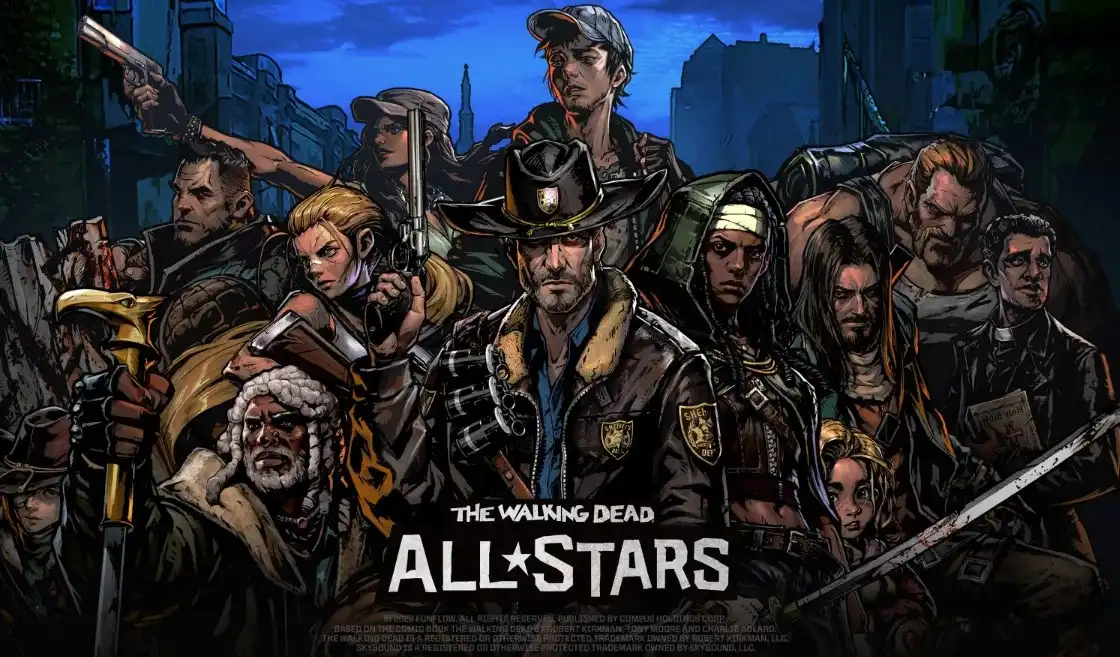
Few things are more fun than a zombie apocalypse. Going out for supplies, getting your weapons, firing a few shots, alerting the horde, and barely coming back alive only to find out that someone has been bitten is all good fun. Or is it just me?
The Walking Dead: All-Stars is a hero collector game similar to other hero gachas like League of Pantheons or Magnum Quest. In this game, you will collect characters from all walks of the Walking Dead universe, using their unique powers and skills to create an
invincible fighting force. The Walking Dead: All-Stars is available on both the App Store and the Google Play Store. The Walking Dead: All-Stars combines enough depth and optimized features to make the game easy to learn and
If, however, you want to get an idea of what the game offers as well as a brief overview of the early game, read on as we’ve put together a beginner’s guide to The Walking Dead: All-Stars!

Character Characteristics
All characters have characteristics. On the survivors page, you can see their three main characteristics: HP, ATK, and DEF. But if you want a more detailed view, you can click the information button (i) on the right side of the screen to open this panel.
But for reference, here is a list of character characteristics and what they do.
- HP: Health points. If they reach zero, the character dies and can no longer
can no longer participate in the current battle. - ATK: Attack Strength. The more of this you have, the stronger your attacks will be.
- DEF: Defense. Harder to beat the crap out of you.
- Crit Rate: The probability that an attack will do double damage.
- ACC: Accuracy. Increases the effectiveness of your physical attacks.
- EVA: Evasion. Makes it harder to hit you with physical attacks.
- SPD: Speed. Affects both the movement speed of your character and the
Recovery time. - HPS: HP regeneration per second. Always active.
- FP Reduction Rate: Damage reduction from FP attacks, represented in
percentage. - PHYS Reduction Rate: Damage reduction from physical attacks, expressed as a
percentage. - Lifesteal: Affects the amount of health you regenerate after taking damage.
Character Skills
Each character also has his or her own unique skills to withstand enemies.
All characters have a powerful Absolute skill that they can use at any time if their energy bar (the yellow bar below their health) is full. All characters start with Ultimate unlocked by default.
Each character also has a number of other skills they use, depending on their rarity. Rare characters have 2 additional skills, epic characters have 3 more, and so on. These skills are automatically used in combat – and no, you can’t control when or what they use these skills for – but they can still make a big difference.
A character’s skills automatically increase as the character gains levels, but the level at which a character gains skill levels requires the extra cost of needing a Skill Guide.
Character Roles
There are 5 character roles in The Walking Dead: All-Stars. Each role gives you a general idea of what the character’s purpose in combat is.
- Warriors are strong melee fighters. These characters enjoy engaging in bloody and brutal melee combat, and they specialize in both punishment and execution.
- Tanks focus on protecting their allies, whether it’s taunts, shields, or anything else. Although their damage is mediocre at best, tanks are always the first in combat and the last survivors.
- Technicians use their many ranged weapons–guns, grenades, whatever–from the rear. These fighters are not very tough, but they can do a lot of damage.
- Rangers use a variety of weapons, both melee and ranged, to take out key targets in combat and make it easy on both themselves and their allies.
- Support units are rarely in the spotlight, instead using their abilities to support their comrades with healing and reinforcements.
Character worldviews and build bonuses
Worldview serves as the element system in The Walking Dead: All-Stars.
Like most games with weaknesses and elemental resistances, The Walking Dead: All-Stars uses a 4-2 element scheme. In other words, the ally is good against the witness, the witness is good against the neutral, the neutral is good against the predator, and the predator is good against the ally. And then we have two distant elements/worldviews, the Caretaker and the Warlord, which are strong against each other.
The worldview is not only the essence of The Walking Dead: All-Stars’ elemental system, but also its shaping bonuses.
Depending on the placement of units in your formation, you can activate different bonuses.
- 3 characters of the same worldview give each +10% HP and ATK.
- 3 characters of the same worldview plus 2 characters of a different (same) worldview increase this gain to + 15% HP and ATK.
- 4 characters of the same worldview give all +15% to attack and +20% to health.
5 characters of the same worldview give everyone +25% HP and ATK.
These formation bonuses can be juicy, but they are not always the smartest move. +25% HP and ATK is a respectable amount, but having 5 characters with the same worldview pretty much guarantees that you will die against a team with even a few characters that your worldview is weak against.
Overseers and Warlords have their own unique formation bonuses.
- Overseers are wildcards and are treated as if they belonged to any faction for bonus calculation purposes except Warlords.
Warlords have their own bonus table, depending on the number of warlords in the formation. These bonuses apply to everyone, not just warlords.
- DEF + 30%
- Energy regeneration +25% on hit
- Critical hit chance +15%
- SPD +15
Actual Combat
After a detailed description of characteristics, skills, and outlook, it’s time to talk about combat. Combat in The Walking Dead: All-Stars is relatively simple.
Having lined up five units in a 2-3 formation, they will move forward, attacking enemies they encounter. The units can and will run to attack new targets if they need to, such as if they kill an enemy they are fighting. And every time their energy scale fills up, they use their ultimate ability. About that!
Note that you can activate auto mode to have your characters use their ults anytime they aren’t recharging by clicking the “Auto” button on the left. Once you clear 2-16, you can also press the 2x button to play battles at double speed.
Character Recruitment
Getting new characters in The Walking Dead: All-Stars is pretty easy. Just roll the gacha!
Rolling the base banner consumes gold bars. It costs 400 per roll, but I highly recommend doing 10 rolls instead, as it has a 10% discount (cost reduction to 3600) and a guaranteed epic.
There are also alignment based banners. These character banners are guaranteed to give you characters of that faction. This comes at the cost of having to buy tickets (for real money) from the store.
Other ways to recruit characters include collecting pad parts from your adventures, which give you a random character depending on the rarity of the pad, as well as from events and story completion.
Wish List
The wish list is a very important feature that you should definitely use before you start gacha.
On your wish list you can choose up to 5 characters for each faction – Ally, Witness, Neutral and Predator. When you get an epic character by casting, the likelihood of that character ending up on your wish list is much higher. Note that you can also intentionally leave the wish list cells blank if you only want to get certain characters.
Build a City
Your survivors need a place to regroup, rest, and resupply. This is where the city feature of The Walking Dead: All-Stars comes in.
Unlocking City Buildings
Initially, you won’t be able to build anything. That’s because the building blueprints are hidden behind the campaign stages. It’s in your best interest to go through the normal stages as quickly as possible to unlock new buildings.
As you progress through the campaign, you’ll not only get blueprints for new buildings, but you can also improve existing buildings to improve their performance. Be sure to check your city from time to time to see if anything can be repaired!
Character Recruitment
As mentioned earlier in this guide, you will be getting characters mostly through gachapon, and you do this in town.
Before you can choose your characters, you need to advance a bit in the main game-if memory serves me correctly, around the end of the first chapter you can set this up. If you haven’t already done so, make sure your wish list is set up correctly, so you have a better chance of drawing the characters you really want.
Command Center
The Command Center is where you can pair characters of the same rarity with characters of higher rarity, improving their characteristics and skills in the process.
Since it makes no sense to have multiple copies of a character, always go to the Command Center after a gacha roll to reinforce the characters you currently have and strengthen your overall strength.
Administration
The Administration Office is where you can combine bound characters to give them passive reinforcement.
Some characters can link to each other, creating unique stories that you can read in the administration office. If you also have these characters, you may also place them in the slots on the left side. Once these slots are fully filled, each of these characters will receive a positive effect!
Note that the strength of the buff is determined by the overall rarity of the characters involved in the story. To activate more powerful buffs, you need to raise all of their rarity to unlock new perk levels, as shown on the right.
Trading Post
The Trading Post is where you can spend some of the currencies you’ve been collecting on more useful items.
You can spend gold bars, and if you are lucky, canned goods, to buy equipment and supplies at the trading post. More importantly, here you can spend currency earned from both survivor transfers and supplies.
Gate
Your city gate is where you can control your survivors and disarm or transfer them.
Nothing is ever truly lost. Basically. If you ever decide you no longer want to use a character, or if you find a character with higher rarity and better characteristics that fits the same niche, you can disarm the character.
Disarming a character means lowering its level to 1 and returning the resources you spent to develop it. It’s not free – you have to pay 20 gold bars to disarm a character.
Gates also have the ability to transfer survivors, which is a euphemism for selling or disposing of them.
Only characters of ordinary rarity can be transferred, and if you do so, you gain several resources that you can use to develop your rarer and better characters. Ported characters also give you special currency, which you can spend in a trading post.
Postapocalyptic Economy
People still need to eat and pay even after the end of the world. To build your city and your fighting force, you’ll need to earn a steady income through a variety of means.
Do the daily business
It goes without saying for every mobile game, but do daily. Your daily quests are your daily bread, and while they won’t give you anything of note, they will give you the resources you need to advance.
The Walking Dead: All-Stars quests are divided into daily quests, weekly quests, and main quests. The daily and weekly quests are self-explanatory, and both fill your own activity lane, which you can trade for even more rewards. Major quests are one-time tasks that serve as milestones in your game and provide generous rewards when you complete them.
Participate in Events
You should always participate in events when they are available. Events almost always give out basic resources and maybe even one-time limited rewards if you’re lucky!
Be sure to check the events menu on the main screen whenever a red dot appears on it – it means that either a new event has started, or you have prizes waiting to be redeemed. New players in particular should take advantage of the New User Entry event, as well as the Leader Rick event, to get useful new characters at the start of the game.
Continue Supplies
Supply races are a great way to test your combat prowess and earn some resources.
Supply Runs is a kind of roguelike game mode. During Supply Runs you start in the lowest left hex and must choose an adjacent hex to move to. These hexes can contain many things, from combat encounters to temporary characters you can use during Supply, to health and even just resources.
The ultimate goal of Supply is not only to mine resources, but also to obtain valuable Supply currency, which you can exchange for items such as notebooks in the Trading Post!
Each battle gives you more options during your races with supplies, and you can choose a stats bonus that lasts until the end of the race after you complete each battle. You will need to carefully balance your actions between gaining resources or gaining bonuses to achieve higher levels.
Auto Search and Quick Search
Even when you AFK, the game will constantly generate resources that you can use when you return. This is known as the auto-search feature. To open this menu and get your rewards, simply click on the background in the main menu. The more items you can collect, the more cluttered the scene will be.
Your income from automatic sourcing has two limitations. First: the rate of resource generation depends on how far you’ve progressed in the main story, with certain items being unlocked at certain stages – and you can see how many of each resource you generate per hour on the auto-search panel. Second, auto-search resources are limited to 12 hours of collection. To maximize your income from automatic search, be sure to log in before your resources reach the limit to ensure that nothing is wasted.
If you need a quick burst of resources, you can send your people to a quick search by clicking the button in the upper right corner of the menu. This allows you to get the resources for 2 hours that you would get with an automatic search. As expected, this has a limit: you can only do this twice a day, it has a (give or take) 24-hour kuldown.
You also only get one free use of the quick search per day — any quick search after the first one will start costing you gold bars. your play session — so you’ll probably advance further, which means your automatic search (and thus the quick search) will give you better stuff.
Character Stories
Each unconventional character has a story to tell, and by sharing some of your time (even a few milliseconds, if you like), you can earn a couple of extra gold bars from each of them.
To read a character’s history, navigate to that character on the Survivors screen and press History.
7-Day Entry Event
New players also automatically participate in the 7-day entry event.
All you have to do is log in every day to get valuable resources and rewards like gold bars, survivor experience, and recruitment tickets. If you complete all 7 days, you’ll also receive a priceless Survivor Choice ticket that lets you choose one of five epic characters!

The Walking Dead: All-Stars codes
To make the most of the game, don’t miss the codes for The Walking Dead: All-Stars. It can help you gain more characters, hide canned goods, and even get some gold bars. Codes are vital to make sure you get everything you need to survive this harrowing zombie apocalypse.
Live to See Another Day
Armed with this knowledge, only you can determine how you will survive in the future. Will you unite with other idealists, believing in humanity’s ability to overcome its baser instincts? Or will you return to a society where force makes right? The decision lies solely in your hands.
That concludes my beginner’s guide to The Walking Dead: All-Stars, and I hope you learned something from it.

An experienced game strategist and writer, a follower of the art of virtual worlds. With his guides, he shares not only the secrets of successful gaming, but also inspires readers to discover new horizons in the gaming industry. With his help, players gain not only knowledge but also confidence in their gaming skills, ready to overcome any challenges thrown at them by the world of virtual adventures.




![Football RNG Codes [EVENT] (November 2024) Football RNG codes - cash](https://pocket-codes.net/wp-content/uploads/2024/06/Football-RNG-codes-100x70.webp)
![Anime Impact Codes [UPDATE 2] (November 2024) Anime Impact codes - gems](https://pocket-codes.net/wp-content/uploads/2024/06/Anime-Impact-codes-100x70.webp)
![Imposters & Roles Codes [Among Us] (November 2024) Imposters & Roles codes - free rewards](https://pocket-codes.net/wp-content/uploads/2023/09/Imposters-Roles-Codes-100x70.webp)
![Weak Legacy 2 Codes [UPDATE 2] (November 2024) Weak Legacy 2 codes](https://pocket-codes.net/wp-content/uploads/2024/07/Weak-Legacy-2-codes-100x70.webp)

![Jood Piece 2 Codes [TEEYOD] (November 2024) Blox Legacy Codes](https://pocket-codes.net/wp-content/uploads/2024/09/Blox-Legacy-Codes-100x70.webp)
![Swim League Codes [New World 7] (November 2024) Swim League Codes](https://pocket-codes.net/wp-content/uploads/2024/09/Swim-League-Codes-100x70.webp)
![Hotdog Eating Simulator Codes [PART 3] (November 2024) Hotdog Eating Simulator Codes](https://pocket-codes.net/wp-content/uploads/2024/09/Hotdog-Eating-Simulator-Codes-100x70.webp)